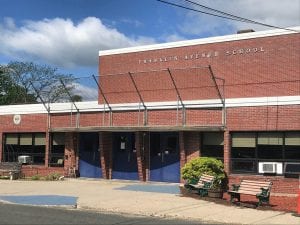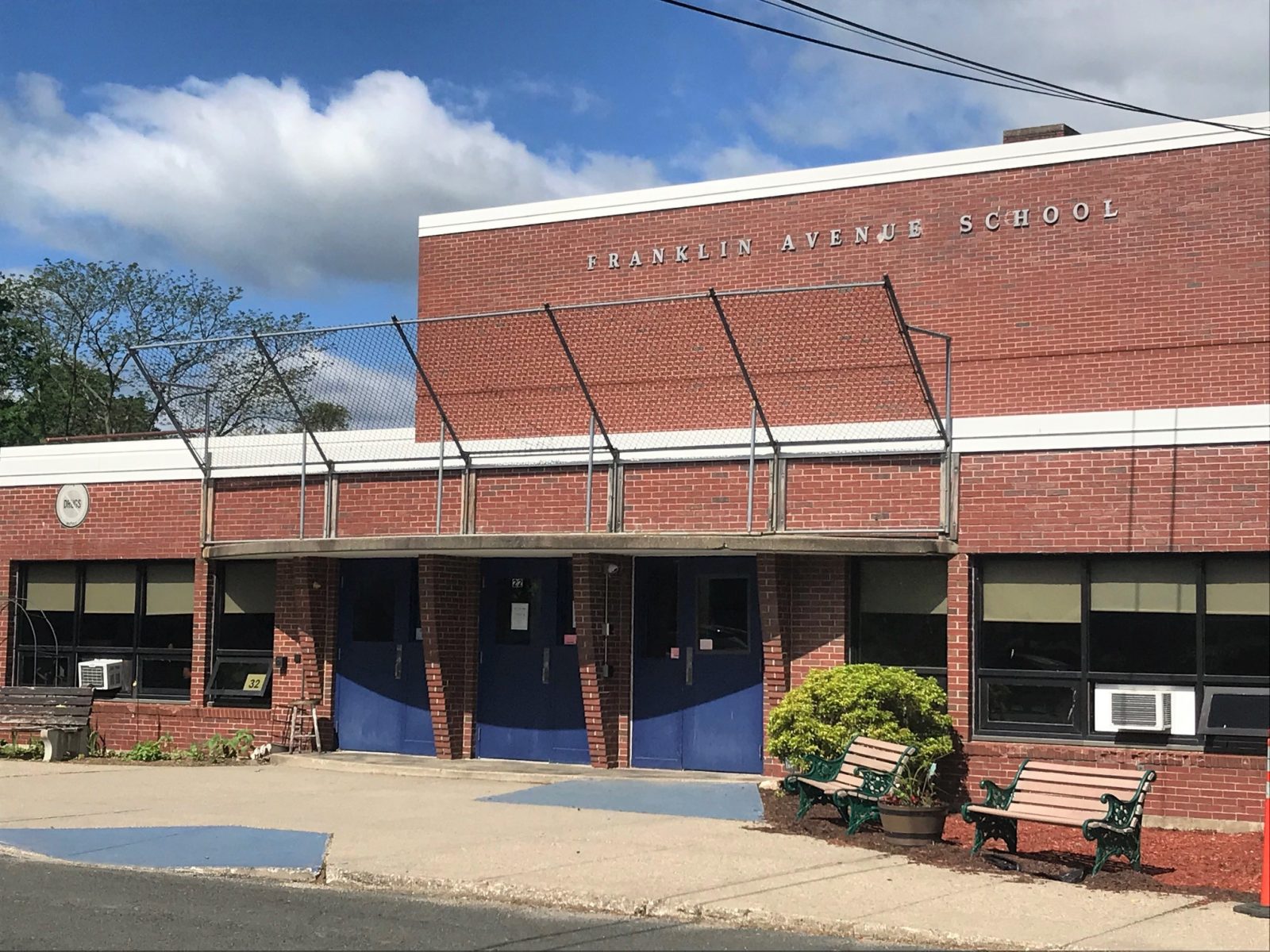
Franklin Avenue Elementary School. (THE WESTFIELD NEWS PHOTO)
WESTFIELD — Despite a promised 73.24 percent reimbursement from the state, city coffers will pay about half the $62.16 million cost of a new Franklin Street elementary school, the owner’s project manager told the School Building Committee this week.
The Massachusetts School Building Authority caps its total reimbursement at $360 per square foot, and limits the reimbursement for some categories of costs, explained Daniel Pallotta of P3 Construction, who is managing the project for the city, at a Sept. 7 teleconference meeting.
Elected officials at the meeting said they still support the project, but worried about “sticker shock” at the City Council, which would have to approve the bonding to finance the construction.
“It’s higher than I think I wanted it to be,” said Mayor Donald Humason Jr. “Are there any areas where we can still reduce the cost?”
Pallotta said the $62.16 million total cost is a conservative estimate, and he expects not to have to spend all of that money. He said when his group begins preparing construction plans, they will do everything they can to reduce costs.
The longer Westfield waits to build this school, the higher costs may go. The cost of materials has been rising at an increased pace in recent years, Pallotta added.
The new 88,495-square foot, two-story school on Franklin Street near Franklin Avenue would replace both Abner Gibbs and Franklin Avenue elementary schools, which Superintendent Stefan Czaporowski described as “two antique buildings.”
“These kids need a state-of-the-art building,” said City Councilor Bridget Matthews-Kane, a member of the building committee. “I think this is a need, not a want. I know costs have gone up because of COVID, but it doesn’t mean the need isn’t there.”
Former Mayor Brian Sullivan, who also serves on the building committee, echoed her point. He said the students at the aging Franklin Avenue building deserve modern classrooms.
“It’s important to say that we’ve now gone many years over the life of that school that we’re going to take offline,” he said. “The amount of time we have lost maintaining a building that should have been closed, and the fact that students that should have already had this are now going to be entering high school, is something that needs to be said, as well. I’ll be more than happy to go in front of the council in support of the number we have.”
City Procurement Officer Tammy Tefft said she, too, was taken aback when she learned that Westfield would have to borrow about $30 million. She said the city will save money by closing inefficient, high-maintenance old buildings, however.
She also said she’s compared the projected construction costs on Franklin Street to other recently completed schools across the state, and the plan by architects Caolo & Bieniek Associates of Chicopee “is below the median” in cost per square foot.
The alternative to building a new school is renovating the current buildings, Tefft said. Just to bring Franklin Avenue Elementary School up to modern building codes would be a $20 million project, she said.
The School Building Committee had known the new school project would cost around $60 million since June, but assumed that the city would only have to pay around $16 million after the state reimbursement. That expectation did not take into account the MSBA excluding several categories of spending from its reimbursement formula.
For example, the MSBA will only reimburse site work up to 8 percent of the project’s total cost, which means $1.83 million of site preparation and landscaping at the Franklin Street property will not be eligible for state aid.
Pallotta said the formula makes sense for inner-city schools that don’t have extensive playing fields or parking lots, but he has never worked on a school project that spent less than 8 percent of its budget on site work.
Other categories where some of the project’s spending will exceed reimbursement limits include design costs, technology and furniture purchases, and removal of asbestos floor tiles at the current Franklin Avenue School. The project includes demolition of that school building.
Matthews-Kane suggested that the city could use some of its $17 million in American Rescue Plan Act money on non-reimbursed items such as furnishings, to reduce the bonded cost of the project.
In all, about $19.59 million of the project costs do not qualify for MSBA reimbursement, Pallotta said. The total construction cost is estimated at $59.39 million, which rises to $62.16 million with the addition of a contingency fund. Costs beyond the estimated $29.7 million state reimbursement will come from bonds to be paid off by local taxpayers.
Following a positive vote by the School Building Committee on Tuesday, Pallotta was scheduled to submit the reimbursement request on Wednesday. The MSBA board will meet Oct. 27 to decide whether Westfield qualifies for a grant. If approved, the next step will be for the City Council to authorize the city to borrow the full $62.16 million cost, with the understanding that $29.7 million will be reimbursed as construction proceeds.








